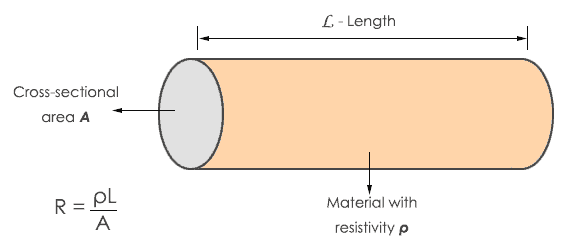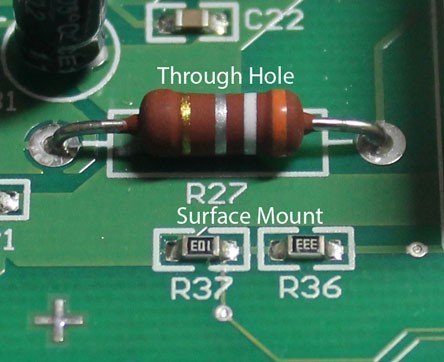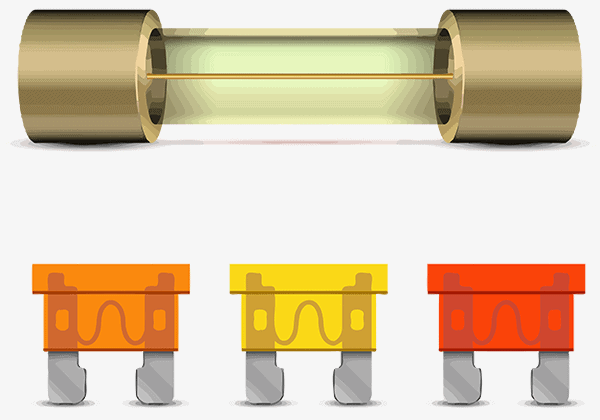Electricity travels through different materials like copper. But have you ever thought how metals conduct electricity?
Do all metals conduct electricity and why? In this tutorial, you will know the different types of conductor and insulator and their electrical properties.
Electronic devices and components are made up of conductor, semiconductor or insulator. The energy level or energy band gap varies for each one.
Conductor
Every metal has an important property called conductivity. Conductivity refers to the power to transfer energy (sound, heat, or electricity) through a material or metals. By definition, the conductor is a material that allows the current and voltage to pass through other materials easily.
According to Bohr’s atomic model, the electrons are loosely coupled to the nucleus. In such type of conductors, the resistance is less when compared with insulators.
The conductivity of a material not only depends upon the metal but also the factors of resistance.
Some of them are:
- Length
The resistance directly varies with the length of the material. For long material, resistance is more and for short material, it is less.
- Area
The cross-sectional area determines the flow of electrons freely. For a larger diameter, resistance is less making the electrons to move.
- Temperature
The resistance is more of a material with higher temperature. This makes the electrons to tightly bind to the nucleus. You have to apply more energy to stimulate electricity.
- Material Type
Metals having good electrical properties have lower resistivity. So, for lower resistance, the current flow will be lesser.
The linearity is good for conductor materials.
The conductor offers a route between the energy source (voltage) and the load. The voltage drop is less making the electrons to roam faster.
And also, an ideal conductor theoretically has zero resistance when applied a potential difference.
Attributes of Conductor
The behavior and function of metals can be known by the following properties.
- Resistance
The resistance is zero for a perfect conductor and also the resistivity alters from low to high range.
The low resistive conductive metals are used in earth wire, electrical loads, transmission stubs etc.
The metals having high resistivity are used in bulbs, heating elements, toasters etc.
- Electric field
The pure conductor has zero electric fields. The electric field inside the metal will pull force on electrons to make a motion. The electric field is zero at equilibrium state. This property is used in ground shielding for electrical devices.
- Inductance
For AC devices conductors experience inductance. When metals conduct potential difference exist and current flows through an outward cross-sectional area of metals. This phenomenon is called Skin effect.
- There is no electrical charge within the conductor.
- The electric field is perpendicular to the surface.
The examples of conductor used in our daily life are silver, copper, aluminum, Mercury, gold, zinc, iron etc. Copper is considered as the good conductor of electricity.
Insulator
Unlike conductor, the insulator is contrary. It is a dielectric material that does not allow the flow of electricity easily. The electrons are tightly bound to the nucleus. Hence, the electrons are restricted to flow from one atom to another.
In most case, the resistance of an insulator is in Mega Ohms. It is important to have insulator for storing the electrical charge when a potential difference is applied.
Another use of insulators is to protect from a high voltage electrical shock.
Examples of the insulator are Paper, Rubber, Wood, and plastic etc.
The fact is that insulator can also conduct by applying high voltage making the free electrons to flow. The dielectric strength of good insulator should be high.
Applications of insulators include preventing voltage from the transmission lines holding the power, Wires coverings for electrical households, preventive enclosures, electrical sockets etc.
Attributes of Insulator
Here are some of the properties of non-conductors (insulators) to be known for better understanding.
- Insulators are known as the bad conductor of electricity.
- Dielectric strength is high.
- Mechanically robust in nature
- Insulating materials must not contain any redundant impurities.
- It should not be permeable
- Their electrical characteristics must not be affected by the change in thermal temperature.
The conductor and insulating materials are used in every electronic circuit for switching an electrical termination. They also prevent from hazardous electrical injuries.



